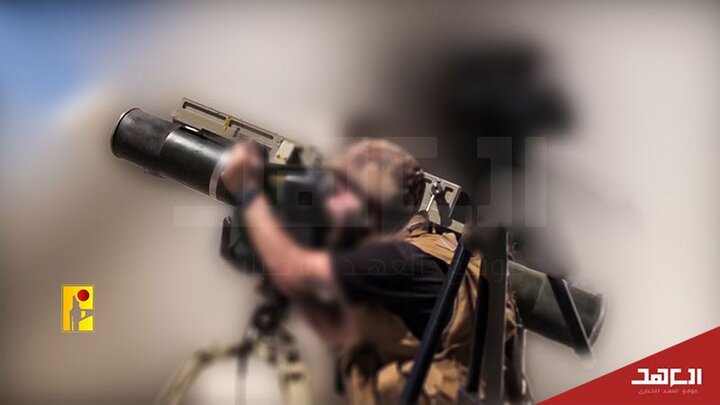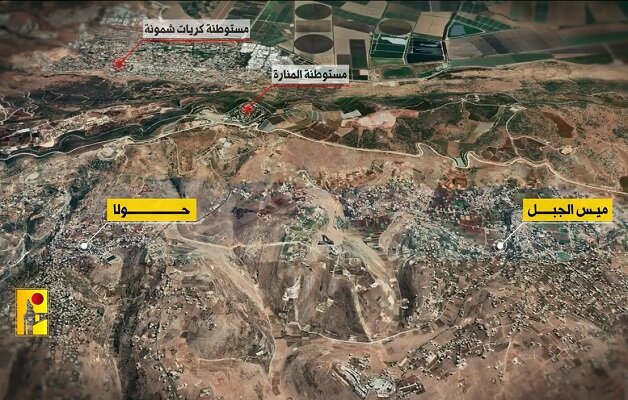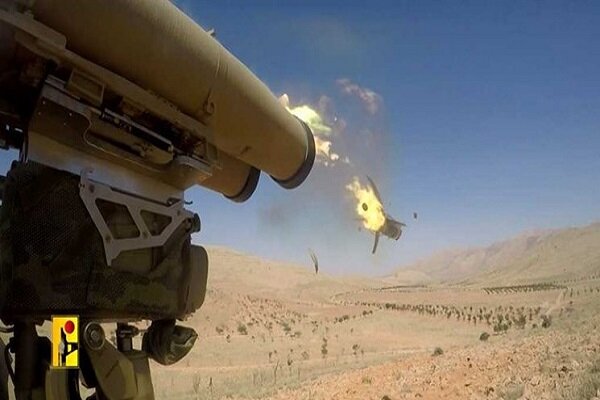With what rockets did Hezbollah ground the Zionists?

| The equipping of Lebanon's Hezbollah with anti-armor missiles in multiple phases has trapped the Zionist regime in a military stalemate from which Tel Aviv does not intend to exit. |
report Mehr News, Lebanon’s Al Ahed news site, in a report, investigated the upward trend of equipping Lebanon’s Hezbollah with anti-armor missiles and analyzed the history of this trend in recent decades.
This report, in the context of a media interview with Haj Hossein, one of Hezbollah’s specialist forces in the field of anti-armor missiles, emphasizes that the process of equipping Hezbollah with these missiles can be done in several ways. split stage
The first stage: between 1982 and 1992
At this stage, Hezbollah’s anti-armor missiles are limited to B7 and B9 projectiles and cannons. It was 106 mm, which naturally could not take significant action against the armored equipment of the Zionist enemy.
The second stage: between 1992 and 1995
At this stage, Lebanon’s Hezbollah tried to expand its anti-armor missiles, and for this reason, it sent a number of its elements to the Islamic Republic of Iran for training. There, they learned how to work with Maliutka, Tau and Fagut interceptor missiles.
During this period, Hezbollah had a limited number of Maliutka missiles, but the use of these missiles at that time caused a shock to the Zionist regime.
Third stage: from 1995 to 2000
During this period, Lebanon’s resistance managed to acquire second-generation missiles, including Fagot. The first launch of this missile was in 1995, when it was carried out against the Zionist position in Eshit, and Hezbollah shocked Israel by destroying a Zionist tank. Hezbollah also used Maliutka missiles during this period. At this stage, the Tau missile was also provided to the resistance forces, which was a second-generation pinpoint missile and had a very high accuracy.
Fourth stage: after 2000
Cornet was one of the missiles that was noticed by the party following the withdrawal of the Zionist regime from southern Lebanon. Allah was placed This missile was provided to Hezbollah in 2002, and according to Haj Hossein, martyred Imad Mughniyeh, the jihadist leader of Lebanon’s Hezbollah, played a significant role in Hezbollah’s access to Cornet, Mets, and B-29 missiles. Of course, the decision of the Hezbollah command was to keep these missiles secret, and this decision was maintained until 2006, and even the military establishment of Hezbollah did not know about the existence of such missiles until the Cornet missile caused many surprises in the 33-day war. Tandem and Konkors missiles were among the other missiles that were provided to Hezbollah during this period.
Achieving Diamond Missile
During the 33-day war of 2006, in one of the clashes in Bent Jabil, the soldiers of the Zionist regime abandoned their weapons and ran away from the resistance elements. Israel’s Spike missile was one of the weapons captured in this war, and Hezbollah forces began to evaluate it. In the evaluations, it was found that this weapon is a type of third generation weapons.
This military affairs expert adds that enhancing the accuracy of hitting and moving from one target to another after launch were two important features of this missile, the latter in the version Engineered was added and was not present in the Spike missile. Another feature of this missile is that it is fired upwards automatically without targeting, and its target is detected at a high altitude and fired at the targets identified after the launch at an angle of 45 degrees.
Missiles used in Al-Aqsa storm operation
According to this report, Lebanon’s Hezbollah entered the field of conflicts as one of the supporting fronts of the Gaza Strip during the Al-Aqsa storm operation, and from its valuable experiences in the field of capabilities A missile was used to target Zionist positions.
According to the announcement of this expert, a member of Hezbollah in Lebanon, the resistance has used all the previously mentioned missiles during this period. The Almas missile was used from the third week of Al-Aqsa storm, but the Zionist enemy could not identify it and thought that the attack was carried out by suicide drones. Israel’s lack of information continued until the second month of the al-Aqsa storm operation, when the resistance disclosed this matter.
Cornets with a range of 8 km and 10 km are among the other missiles used in this operation.
Features of Diamond Rocket
This missile is among the third generation missiles that has its own characteristics. This missile is equipped with a steering system or transfer from one target to another. Almas missile has different ranges including 4, 7 and 12 km.
Multiple warheads are one of the features of this missile, which is anti-armor and anti-military fortifications. Locking on the target is another feature of this missile, in addition to the possibility of tracking the missile’s path at any moment until it reaches the target.
The camera of this missile is part of the missile tracking system that is placed in front of the missile. This missile directly delivers the images to the firing squad and helps to shoot this missile in intercepting targets at a height. This missile has the feature of locking on the desired target, and in this case, even if the target is moving and has the power to maneuver, the said missile will still hit the target directly.
Tharullah missile system
This officer specializing in the anti-armor field of Lebanon’s Hezbollah emphasized in this interview that the Tharallah missile system is one of the resistance initiatives in the war of brains against the Zionist regime. The producers of this system have designed it by taking advantage of the weak points of the Zionist enemy’s radar systems. One of the most important weaknesses is firing multiple missiles at the same time. In this way, the mentioned system fires two missiles at the same time, which makes it difficult to intercept it by the anti-missile systems of the Zionist regime.
Quantitative and qualitative development of Cornet missiles
Lebanon Hezbollah has used 52 Cornet missiles in the 33-day war, while since the start of the Al-Aqsa storm support operation, it has used more than 370 Cornet missiles. Has used.
This military expert adds that despite all the measures Israel has taken to reduce the capabilities of our missiles, Hezbollah’s anti-armor unit still carries out effective attacks against the Zionist regime. and caused a lot of damage to the enemy’s forces and equipment.





